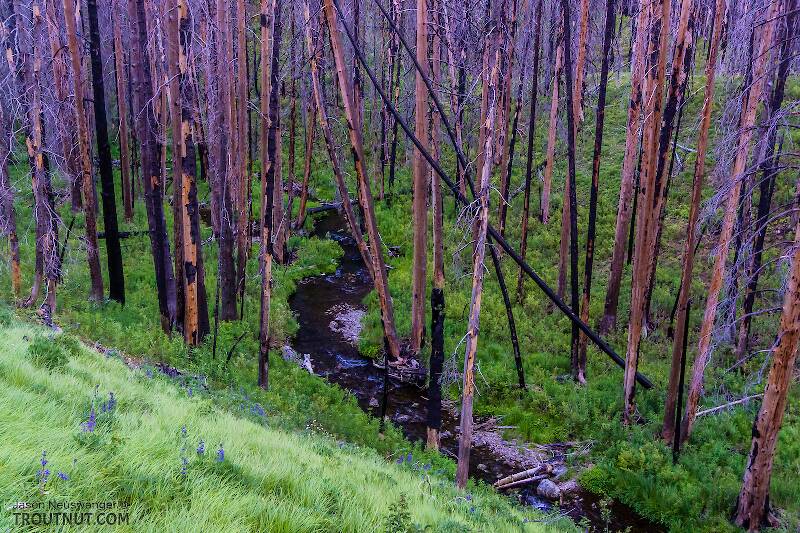
Hex Mayflies
Hexagenia limbata
The famous nocturnal Hex hatch of the Midwest (and a few other lucky locations) stirs to the surface mythically large brown trout that only touch streamers for the rest of the year.
Featured on the forum

This specimen keys to the Epeorus albertae group of species. Of the five species in that group, the two known in Washington state are Epeorus albertae and Epeorus dulciana. Of the two, albertae has been collected in vastly more locations in Washington than dulciana, suggesting it is far more common. On that basis alone I'm tentatively putting this nymph in albertae, with the large caveat that there's no real information to rule out dulciana.

Troutnut is a project started in 2003 by salmonid ecologist Jason "Troutnut" Neuswanger to help anglers and
fly tyers unabashedly embrace the entomological side of the sport. Learn more about Troutnut or
support the project for an enhanced experience here.
Caddisfly Species Limnephilus submonilifer (Summer Flier Sedges)
Where & when
Preferred waters: Rivers and spring ponds
In 142 records from GBIF, adults of this species have mostly been collected during June (22%), May (20%), September (20%), October (11%), April (9%), August (6%), and July (6%).
In 89 records from GBIF, this species has been collected at elevations ranging from 20 to 5075 ft, with an average (median) of 778 ft.
Species Range
Larva & pupa biology
Current speed: Still to slow
Start a Discussion of Limnephilus submonilifer
References
- LaFontaine, Gary. 1981. Caddisflies. The Lyons Press.
- Swisher, Doug and Carl Richards. 2000. Selective Trout. The Lyons Press.
Caddisfly Species Limnephilus submonilifer (Summer Flier Sedges)
Species Range
Common Names
Resources
- NatureServe
- Integrated Taxonomic Information System
- Global Biodiversity Information Facility
- Described by Walker (1852)

